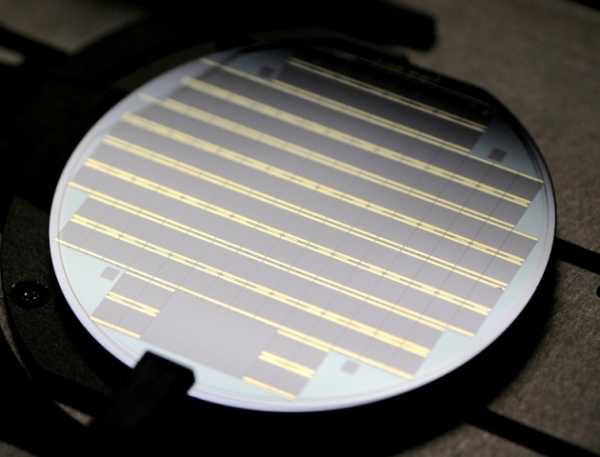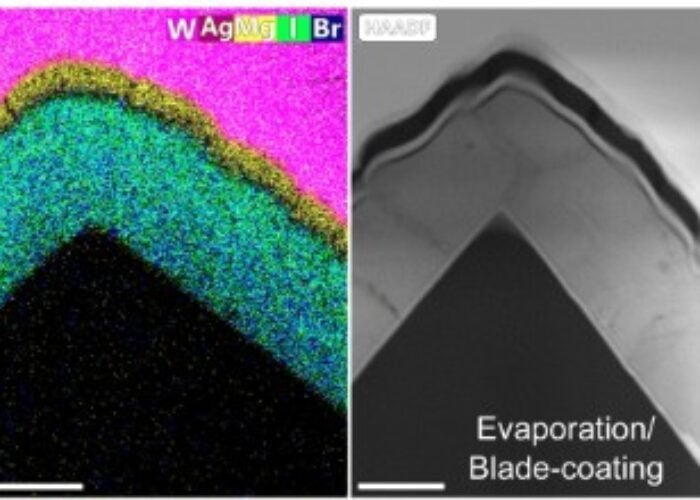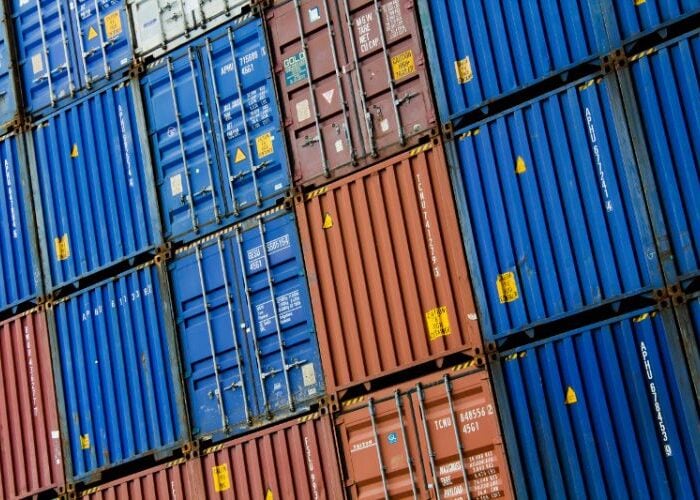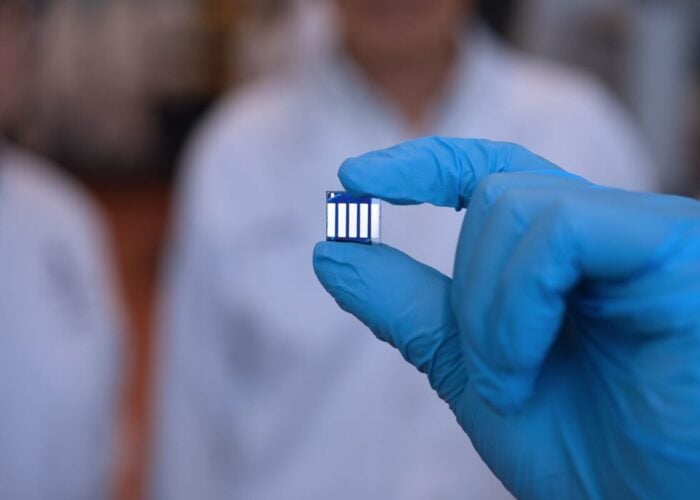
The U.S. Department of Energy’s National Renewable Energy Laboratory (NREL), the Swiss Center for Electronics and Microtechnology (CSEM), and the École Polytechnique Fédérale de Lausanne (EPFL) have reported dual-junction and triple-junction cell efficiency gains.
In testing silicon-based multijunction solar cells, researchers have found that the highest dual-junction efficiency (32.8%) came from a tandem cell that stacked a layer of gallium arsenide (GaAs) developed by NREL atop a film of crystalline silicon developed by CSEM.
Unlock unlimited access for 12 whole months of distinctive global analysis
Photovoltaics International is now included.
- Regular insight and analysis of the industry’s biggest developments
- In-depth interviews with the industry’s leading figures
- Unlimited digital access to the PV Tech Power journal catalogue
- Unlimited digital access to the Photovoltaics International journal catalogue
- Access to more than 1,000 technical papers
- Discounts on Solar Media’s portfolio of events, in-person and virtual
An efficiency of 32.5% was achieved using a gallium indium phosphide (GaInP) top cell, while a third cell, consisting of a GaInP/GaAs tandem cell stacked on a silicon bottom cell, reached a triple-junction efficiency of 35.9%—just 2% below the overall triple-junction record.
Stephanie Essig, a former NREL post-doctoral researcher now working at EPFL in Switzerland, is lead author of the newly published research that details the steps taken to improve the efficiency of the multijunction cell. While at NREL, Essig co-authored “Realization of GaInP/Si Dual-Junction Solar Cells with 29.8% 1-Sun Efficiency,” which was published in the IEEE Journal of Photovoltaics a year ago.
In addition to Essig, authors of the new research paper are Timothy Remo, John F. Geisz, Myles A. Steiner, David L. Young, Kelsey Horowitz, Michael Woodhouse, and Adele Tamboli, all with NREL; and Christophe Allebe, Loris Barraud, Antoine Descoeudres, Matthieu Despeisse, and Christophe Ballif, all from CSEM.
“This achievement is significant because it shows, for the first time, that silicon-based tandem cells can provide efficiencies competing with more expensive multijunction cells consisting entirely of III-V materials,” Tamboli said. “It opens the door to develop entirely new multijunction solar cell materials and architectures.”
The perennial problem for GaAs (III–V) based solar cells has been the production costs and the dominance of crystalline silicon as the solar substrate of choice.
However, the researchers believe that production costs of tandem cells on silicon can become commercially viable in the future.
The researchers assumed a 30% cell efficiency of a GaInP-based cell would cost US$4.85 per watt today and a GaAs-based cell would cost US$7.15 per watt. But as manufacturing ramps up and the efficiencies of these types of cells increased to around the 35% mark, the researchers estimated that the cost per watt could fall to 66 US cents for a GaInP-based cell and to 85 cents for the GaAs-based cell.







